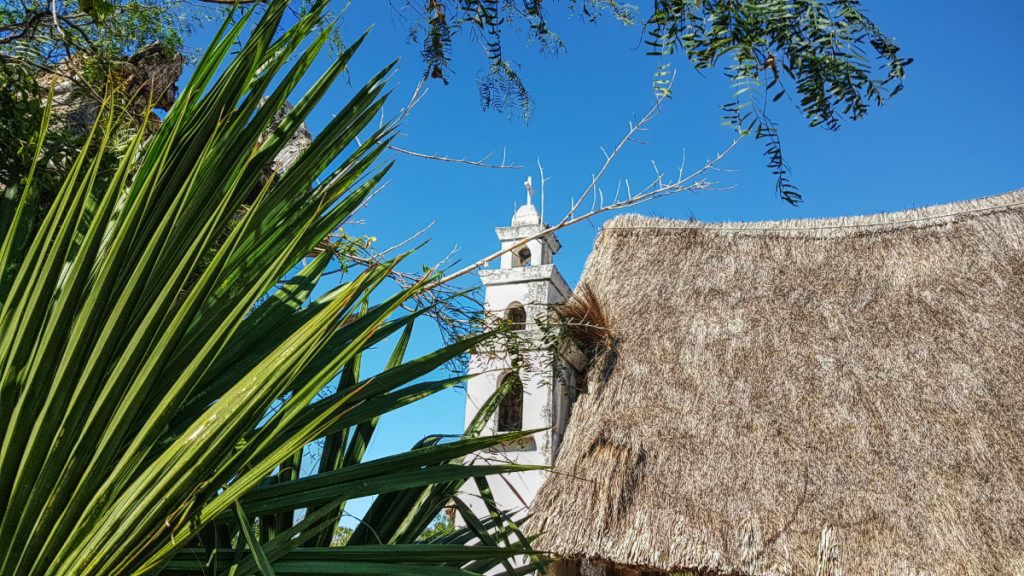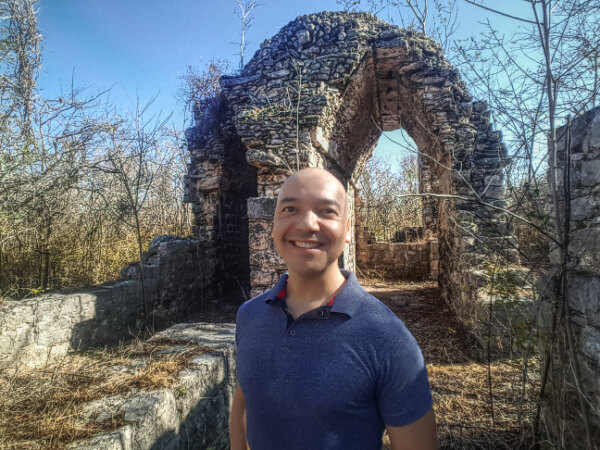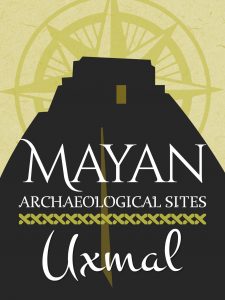The Xcambó Timeline can give us an idea of the time it was inhabited and the influence it received by other Mayan cities.
Late Pre-classic Period (350 BCE – 250)
On the northern coast of Yucatan and the rest of the peninsula, there were already numerous indications of settlements of various magnitudes and degrees of organization, but in general, they shared the same style in the construction of their public and housing buildings, but above all, use of the same ceramic groups was established.

Early Classic Period (250 – 550)
Xcambó was erected as a commercial port and its function consisted in the administration of salt and marine products, as well as being the center for the gathering of local, regional and supra-regional goods.
Basically, during this period, the importance of Xcambó as an administrative salt center is clear. It had to control the production and distribution of the salt that was exploited in the extensive nearby salt areas.

In the Early Classic Period, the monumental architecture is not defined as a pure style but presents a combination of the early Petén style and the constructive system characteristic of the late coastal sites.
The Early Classic constructions and houses were not large, and many of them were covered by new and more elaborate ones.
This was also the most important and influential period of the site, which was occupied in its entirety. Practically all the materials that came from the east coast and Petén were replaced by those of the west coast from the area of Celestún, Campeche, Edzná and Becan.
By then, there was a strong connection with the regional sites of the Laguna de Terminos. All the polychrome ceramics correspond to the sites of those regions which were probably centers of distribution, including the fine orange ceramics and the Jaina-style figurines.
The above seems to suggest a strong relationship between the sites of the Campeche region with Xcambó, whose main interest continued to be the exploitation of salt. There are no reported sites in the Yucatan Peninsula with so many field materials from Campeche like in Xcambó.
Middle Classic Period (550 – 830)

The archaeological site of Xcambó was standardized with the use of architecture based on rough rectangular blocks and flat slabs. It was necessary to apply a thick stucco plaster to hide the imperfections of the walls, which was done in a similar way in the post-classic period (1000 – 1450).
For the Middle Classic period, there was a lot of activity in Xcambó oriented towards the coast, from Celestún to Laguna de Términos; and on the eastern coast, particularly with Coba and Cozumel.
Xcambó must have been an administrative salt center dependent on a major one, apparently, this site’s interest was to strive to maintain the exploitation of salt for trade.
Late Classic Period (830 – 950) and Terminal (830 – 950)
During these periods the number of coastal sites increased, some of which were densely populated. Thus, in the central part of the northern coast, sites such as La Providencia and Xcambó emerge as major centers of salt production, where Xcambó must have been the most important.
During the boom of the cities of the Puuc region in the Late Classic and later of Chichén Itzá in the early Postclassic (950 – 1200), Xcambó was practically abandoned as a salt administrator center, it’s likely that the direct control of the salt mines was left in hands of a new port, which could have been Isla Cerritos for Chichén Itzá in the Terminal Classic Period (850 – 950) and Early Postclassic.
From Xcambó there are no materials that indicate connection during these periods with Puuc region, however, there is architectural and ceramic evidence of a very late occupation of the site.
The evidence are two niches of East Coast architecture attached to a building of previous construction located in the northeast corner of the main square; as well as three altar platforms located in the south-central part of the same plaza; and another on the side of the Pyramid of the Masks that closes it on its southern side.
Ceramic materials were also scarce, basically fragments of censers, all of which indicates that Xcambó was by then just a place of worship.
Xcambó in the present time

This ancient Mayan city is still seen today as a place of pilgrimage and worship but not by any Mayan belief, but a Catholic one, the virgin of Xcambó.
According to tradition, the Chapel of the Virgin has been on the site for more than 50 years, it has been venerated ever since in this chapel on pre-Hispanic buildings.












